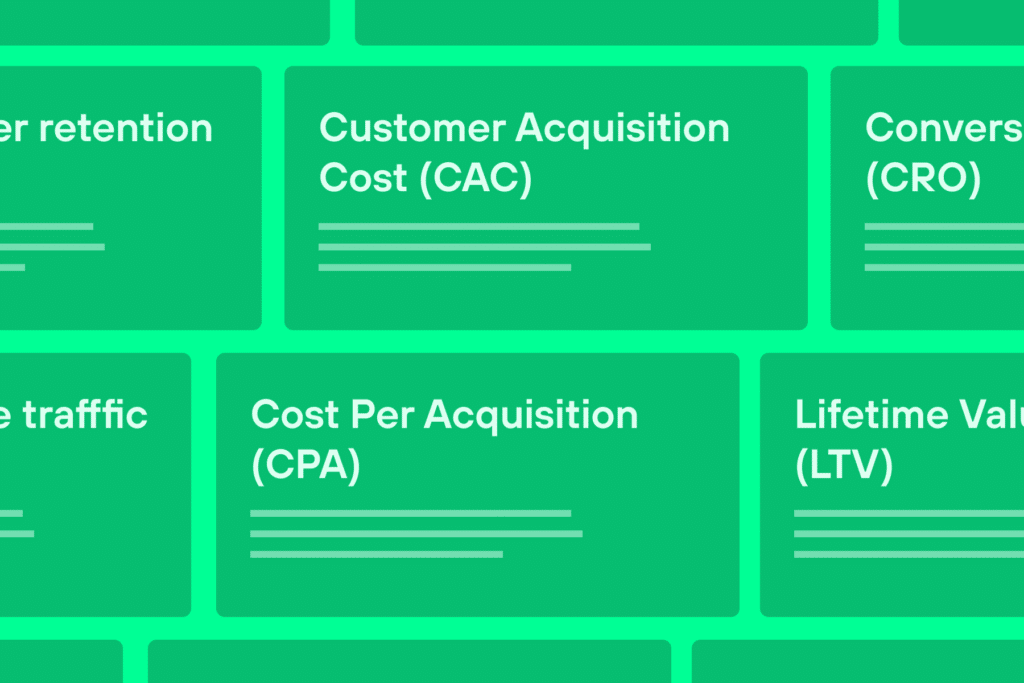May 3, 2024
CAC vs CPA: Understanding the Key Differences and Benefits.
Managing marketing budgets and measuring return on investment (ROI) are constant challenges for businesses. The metrics customer acquisition cost (CAC) and cost per acquisition (CPA) are invaluable tools for any business that wants to track the success of its marketing efforts. But how do these two differ? We’ll dissect CAC and CPA, clarify their differences and explain how they empower your business.

Defining CAC and CPA
Customer Acquisition Costs (CAC)
This metric reveals the total cost involved in acquiring a single paying customer. CAC affects all expenses related to marketing, sales and other efforts throughout the customer journey that leads to a conversion. By calculating the CAC, businesses can determine how much they need to invest in acquiring new customers and whether their marketing efforts are yielding positive results.
Cost Per Acquisition (CPA)
CPA is a broader metric that measures the cost of acquiring a potential lead or when a customer takes a particular action. This pricing model helps businesses assess the efficiency of their marketing campaigns and evaluate their ROI for each customer.
The Key Differences Between CAC and CPA
The distinctions between CAC and CPA lie in the focus of their measurements. Here’s a breakdown:
- Focus – CAC targets paying customers, while CPA encompasses a wider range of acquisitions such as those who may or may not convert into customers.
- Scope – CAC has a longer projected horizon, processing the full journey a potential customer takes until they make a purchase. CPA has a shorter time frame, usually an immediate and specific action.
- Calculation – CAC calculation tends to be more complex compared to CPA.
Purpose and Usage of CAC and CPA
Both metrics provide valuable insights, guiding business decisions in distinct ways.
CAC is widely used to determine the long-term profitability of acquiring new customers. It is indispensable in comparing revenue generated per customer against the cost of sourcing a new one. By comparing the CAC to the lifetime value (LTV) of a customer, companies can assess whether their efforts are generating a positive return.
For an accurate and efficient and actionable way to calculate CAC, LTV and CLTV for your online store, Lifetimely by AMP has it all set up. The app integrates completely into your Shopify store, equipping you with insights, reports, billions of data, and critical business suggestions to scale. Lifetimely also has an automated profit and loss dashboard, granular customer behavior reports, AI generated LTV projections, month-to month sales forecasts by cohort and more.
CPA is used on a tactical level to optimize marketing campaigns and media channels into immediate ROI. Once you calculate CPA, you can identify which options are the most cost-effective and allocated funds to those resources. In addition, businesses can track the cost of acquiring non-paying users for actions down the pipeline, like newsletter subscriptions or scheduling a demonstration for the customer to be then interested, and convert. CPA is vital for experimenting with different creative ways to convert a customer and identify their combinations.
By calculating and analyzing these metrics, companies can optimize their marketing efforts, allocate their resources effectively, and ultimately drive long-term profitability.
Benefits of CAC
Let’s explore some additional benefits in detail:
- By knowing your CAC, your business can develop realistic acquisition goals and set appropriate budgets.
- With a clear understanding of the costs associated with acquiring new customers, businesses can plan their marketing campaigns more strategically.
- CAC helps with accurate forecasting to enable businesses to make informed decisions.
- By understanding your CAC, you can enhance customer acquisition and drive more sustainable growth.
Benefits of CPA
Let’s take a look at the benefits of calculating CPA:
- CPA provides valuable insights for performance evaluation and risk management.
- It is a metric that helps evaluate the efficiency and effectiveness of customer acquisition efforts, gaining valuable insights into marketing strategies and proposing data-driven decisions.
- Helps businesses manage the risks associated with customer acquisition by considering the costs and outcomes of different marketing initiatives.
- When it comes to risk management, CPA provides valuable insights into financial implications.
Choosing Between CAC and CPA
When it comes to choosing between CAC and CPA, businesses should consider several factors.
Factors to Consider in Differences of CAC and CPA
Companies need to evaluate their goals, marketing objectives, and financial capabilities. If long-term profitability and budget planning are top priorities, focusing on CAC might be more suitable. However, if immediate ROI and performance evaluation are crucial, prioritizing CPA would provide more valuable insights.
Making an Informed Decision
Ultimately, the decision between CAC and CPA depends on the company’s specific needs and goals. By carefully analyzing the benefits of each metric and understanding their differences, businesses can make informed decisions and maximize their customer acquisition efforts.
In conclusion, understanding the differences between CAC and CPA is essential for businesses aiming for long-term profitability and effective customer acquisition strategies. While CAC focuses on the overall costs and strategic planning, CPA provides insights into immediate ROI and performance evaluation. By considering the benefits and factors involved, businesses can make informed decisions and optimize their marketing efforts for optimal customer acquisition and financial success.
Measure CAC and LTV so you know how much to spend.
Start today,
for free
Start a free trial of any of AMP’s tools today.

